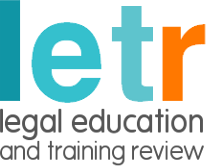Structure of the report
1.59 The seven chapters of the report set out the findings from the research phase as a whole, identify the evidence on which those findings are based, and present a range of recommendations for the approved regulators and the Legal Services Board. The chapters follow the development and interplay of the themes identified: context, content, and systems.
1.60 Chapter 2 looks at the background to, and current context of, legal education and training, contrasting the model of training for barristers and solicitors with those of the other professions and offers some evaluation of the strengths and weaknesses of current approaches.
1.61 Chapter 3 focuses on trends in the legal services market and the changing regulatory landscape. The implications for LSET of projected legal workforce needs are considered, together with the emergence of new roles for regulated professionals and paralegals and key developments in the unregulated sector.
1.62 Drawing on comparative research on other professions and in other jurisdictions, Chapter 4 focuses on the identification and signalling of competence in legal services. It looks at the range of appropriate competencies or learning outcomes and the need to close perceived knowledge and skills gaps. The chapter concludes by exploring the setting of standards and the need for relevant and robust assessment practices.
1.63 Chapter 5 develops the theme of assuring competence for the future, and considers the role of regulated titles and how title based regulation may be supported or supplanted by more entity or activity based approaches. It looks at ways to increase the flexibility of routes to qualification, and the possibility of more common or integrated training between the different legal professions. It also considers the relative roles of CPD and re-accreditation in assuring continuing competence. The chapter concludes by discussing the contribution of quality assurance processes to maintaining competent performance.
1.64 Chapter 6 focuses on four issues critical to the future development of LSET: the promotion of fair access; the assurance of continuing competence through enhanced supervised practice and a revised approach to CPD, and the possibility of increased regulation or quality recognition for paralegals. The chapter concludes by exploring a range of institutional changes intended to support information flows and cultural change in the future regulation of LSET.
1.65 Chapter 7 summarises key findings and conclusions drawn from the research set against an equality impact assessment. It also sets out the recommendations for the regulatory bodies and identifies areas requiring further research.

